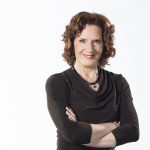Dutch hyperlocal pushes envelope in mixed-zone editorial/commercial content
In just one year, Bart Brouwers has grown Dutch hyperlocal Dichtbij’s (meaning “close by” or “close to me”) website network to 85 communities from just three. It’s been fast, he told European Centre of Journalism reporter Alexandru-Brdu Ulmanu, but the trick is to keep a balance between opportunities and costs. To Brouwers, part of that balance, however, means new ideas about journalism and commerce.
In just one year, Bart Brouwers has grown Dutch hyperlocal Dichtbij’s
(meaning “close by” or “close to me”) website network to 85 communities
from just three. It’s been fast, he told European Centre of Journalism
reporter Alexandru-Brdu Ulmanu, but the trick is to keep a balance
between opportunities and costs. To Brouwers, part of that balance,
however, means new ideas about journalism and commerce.
“We pushed the envelope in relation to the ‘mixed zone’ between editorial and commercial,” he told the Centre.
Meaning, when Brouwers talks with advertisers he’s not just talking ad sizes, he’s talking message. A local bank that doesn’t just want to market mortgage rates, for instance, might want people to know they care about the community. “So,” Brouwers tells the Centre reporter, “We are writing about the events they are sponsoring: a festival, a sports clinic etc. Things we would want to write about anyway. One difference: we get paid for it.”
Some would say that’s a pretty big difference — especially when Dichtbij writes stories on products, and not community events.
What do you think? Is the model brilliant, or bad news?
[node:ad]



